Tree removal can be an expensive but necessary task for homeowners, especially when the trees pose risks to property or safety. Fortunately, various programs exist to help seniors, veterans, and low-income households.
This guide provides a complete overview of the free and discounted tree removal options, including government grants, non-profit initiatives, and assistance programs.
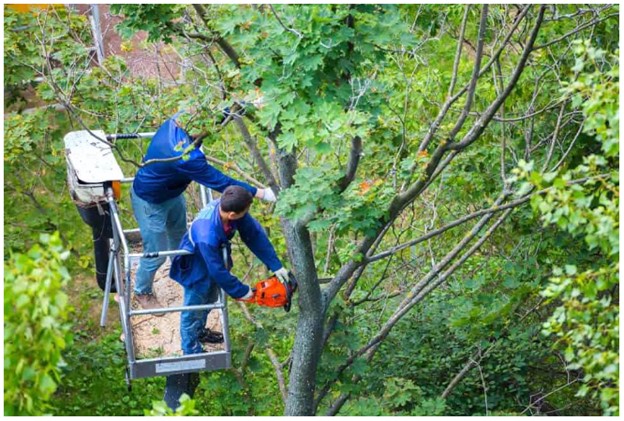
What we cover
ToggleMyth busting
Before we start it’s worth pointing out that tree services will not remove trees for free. They run a business and have bills to pay and families to feed, so the money does have to come from somewhere.
There are unique cases where a tree or trees, have more value in timber than it costs to cut them down, so tree removal in exchange for wood is possible in certain scenarios, but it is rare.
Most of the time the money comes from the government in the form of grants and assistance programs.
How Much Does Tree Removal Typically Cost?
The cost of removing trees varies greatly from tree to tree and city to city. It even varies depending on whether you get your tree removed in summer or winter. That is a subject beyond the scope of this post, but I have a very detailed guide about the removal of trees and their cost here which will answer all your questions.
Generally, tree removal costs range from $500 to $7,700. The average cost of tree removal is $1,257.
How much you pay for tree removal depends on:
- Size of the tree to remove
- Number of trees to remove
- Tools used
- How long it will take to complete the job
- Type of the tree
- The health of the tree. Healthy trees are difficult to remove. Arborists will charge you more for difficult-to-remove healthy trees
- Access to your location
River Williams from Central Coast Tree Removal Pros says “The two biggest factors by far as the overall size of the tree and the difficulty of removal. This is generally linked to access and room to work. There is a big difference between a tree in an open field and one overhanging a house.
Be sure to get 3 quotes before beginning work as it’s your best bet in getting a better deal.”
Free Tree Removal for Seniors
There is no country-wide federal program to assist seniors with tree removal. However, lots of cities and counties have their own programs. Most are geared towards dead, dying, or hazardous trees.
If your city or county does not have a program, we will discuss other ways for you to get your tree removed for free or for a lesser amount in this article so keep on reading.
Hazardous Tree Removal and Tree Assistance Programs for Seniors
Escambia County, Florida
For trees that are posing a danger to your residence in Escambia County, you can take advantage of the Community Redevelopment Agency’s Residential Hazardous Tree Program.
As a senior, you will be able to avail of free tree trimming or removal if your household income does not exceed 80 percent of Escambia County Median Area Income.
Also, the tree to be removed or its limb must have obvious signs of rot or damage. Your property must also be free of outstanding judgment liens, code violations, and/or delinquent taxes.
Funding is based on availability and will be provided on a first-come, first-served basis. The CRA will be providing a licensed and insured contractor to take care of the tree trimming or removal as the case may be.
You can reach out to the Escambia CRA for free tree removal at 221 Palafox Place, Suite 305, Pensacola FL 32502, or send an email to CRA@myescambia.com.
Alabama Home Maintenance Services for Seniors
Several home maintenance services for seniors are obtainable in Alabama. Free tree removal is one of them. You can request for free tree removal services from the local providers in this database.
Eldorado County, California
If you’re a low-income senior in El Dorado County, California, we have good news. The County of El Dorado and the California Department of Forestry (CAL FIRE) have extended their Tree Mortality grant to aged low-income homeowners who are 60 years of age or older.
There is approximately $200,000 set aside to help senior citizens remove dead and dying trees that endanger their residences.
To be eligible for this offer, the tree must be:
- Dead or dying
- Greater than 10 inches in diameter and 20 feet in height
- Within 300 feet of and pose a structural threat to, the residence
- Reasonably accessible by equipment or machinery
To apply for this free tree removal for seniors, you can contact the Community Development Services, Housing Community, and Economic Development Program at (530) 621-5159.
Amador County, California
In an effort to improve public safety, Amador County has launched a new project to remove dead and dying trees west of Highway 49. A recent survey identified hazardous trees that threaten roads, public travel, and private property. Right-of-entry forms have been sent to 111 property owners where these dangerous trees were found.
Through the County’s tree mortality program, marked trees and debris will be removed at no cost to property owners including seniors, with state-funded reimbursement.
Other Ways Seniors Can Get Free or Cheap Tree Removal
If you’re a senior looking for free tree removal services, you may need to assess the value of such trees. If they are trees like palm trees that are considered valuable, you may be optimistic about free tree removal. Non-valuable trees on the other hand will mostly require you to pay for the service, though at a discount.
1. Free Tree Removal for Exotic Trees
If you’re planning to remove an exotic tree that serves the needs of landscapers, you may get the tree removed for free and get paid as well. Such trees are seen as collector’s items but it’s difficult to come across trees that fit into this category.
Some examples of exotic landscaping trees include:
- Oriental Beech
- Silver Lime
- Pacific Red Cedar
- Tsuga de Californie
- Sessile Oak and a whole host of palm trees
2. Get Help From an Experienced Neighbor
You may be lucky to get help from a neighbor who is experienced with tree removal if he or she is equipped with the right tools. Once you are able to communicate your needs in your neighborhood, it is very likely to get help from your neighbors as a senior.
3. Homeowners Insurance Coverage
In some cases tree removal is covered by homeowners’ insurance, but only after the tree has fallen in a storm or by other means.
If the tree falls and damages your home, fence, car, or any other item of value, you actually have a much better chance of getting your insurance to foot the bill. Your insurance company will not come to the party for a perfectly healthy tree you wish to remove.
If you have a dead tree that has fallen due to neglect, you may have a hard time getting the insurance company paying for the removal as they may argue you had neglected to maintain your trees and property.
4. Private Tree Removal Companies’ Discount Programs
There are several subsidized or discounted programs for seniors offered by private tree removal companies. These companies may be optimistic about carving a good name for themselves or are compelled to offer such free service to seniors as a government requirement.
It costs a tree company $500 – $7,700 per day in expenses to run with labor, equipment, fuel, insurance, etc. so they will need to cover costs and make a living on top of that so although most tree companies are charitable, they are not charities so they need to make a living to support their families.
You can check out the Ultimate Tree Service in Alabama. They offer a 10% discount to seniors.
Free Tree Removal in Exchange For Wood
Eliminating the fees associated with tree removal may seem like an ideal scenario, but it’s not always attainable. The fact of the matter is, services aren’t provided without cost, and the financial support must originate from some source.
However, there are circumstances when you can secure free tree removal, or drastically reduce the costs. Below are 6 options you can take advantage of to get your tree removed for free.
Free Tree Removal for Wood
Similar to the exotic trees, some other trees are also valuable due to the quality of timber they produce. Removing your tree free of charge in exchange for wood is possible but rare.
Examples of trees that can be removed for free due to their valuable timber are:
- Ashwood
- Kingwood
- Oak Tree
- Western Red Cedar
- Black Cherry Wood
- Swietenia Mahogany Wood
- Rosewood of the Dalbergia species
Other desirable timbers are Tulipwood, Cocobolo, African blackwood, and Bombay blackwood.
If the tree you want to remove from your property is deemed valuable, you could actually get free tree removal in exchange for the wood. In this case, you need to make it known to tree removal companies close to you.
Such a company will be selling the timber to a logging company to compensate for the service you should pay for.
You can also put up an ad in an online forum, Craigslist, Gum Tree, the local laundromat, or the library.
Ways to Get Free Tree Removal or Offset Costs by Offering Wood
Money to pay for tree removal needs to come from somewhere. Whether it’s in the resale value of the wood, the tree itself or government programs.
1. Contact Your Utility Company
If the tree in question is near power lines, your utility companies will want to remove the tree to protect their asset, the power lines. It would go on a case-by-case basis, but your first step would be to contact them and let them know your a tree close to or touching their power lines.
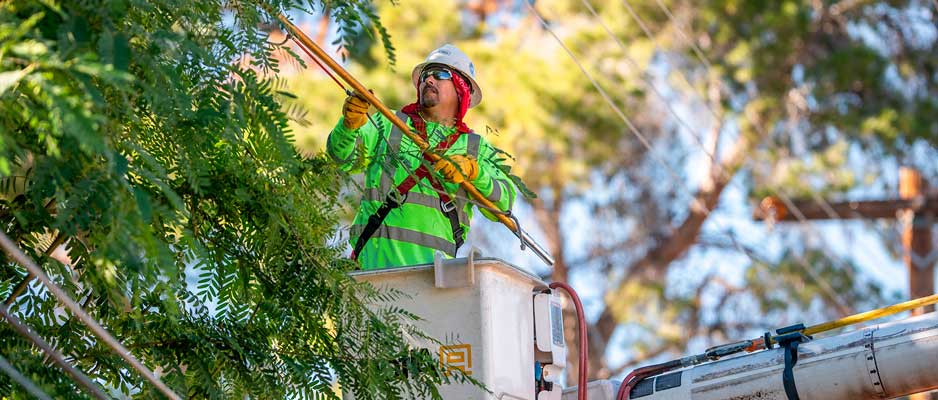
An example is Seattle City Light’s Electrical Safety Tree Trimming Program. Seattle’s Power Line Clearance team and contractor crews work to maintain safe and reliable electric service. They are always ready to remove branches, limbs, and hazardous trees from power lines. You can learn more about the tree trimming and removal program here.
2. Free Wood for Logging Companies
A large consideration for logging companies is the amount of wood they can get for their effort. Before you contact a logging company, ensure that you have a substantial number of trees. They will usually negotiate free tree removal in exchange for the wood on large plantations of 1 acre or more.
They will not work for regular residential tree removal. The more trees you want to be removed for free, the more likely a logging company will do it for you.
When engaging a logging company, you also need to know the species and value of your tree. The type of tree or wood needs to be desirable and there needs to be enough of it so they make a profit.
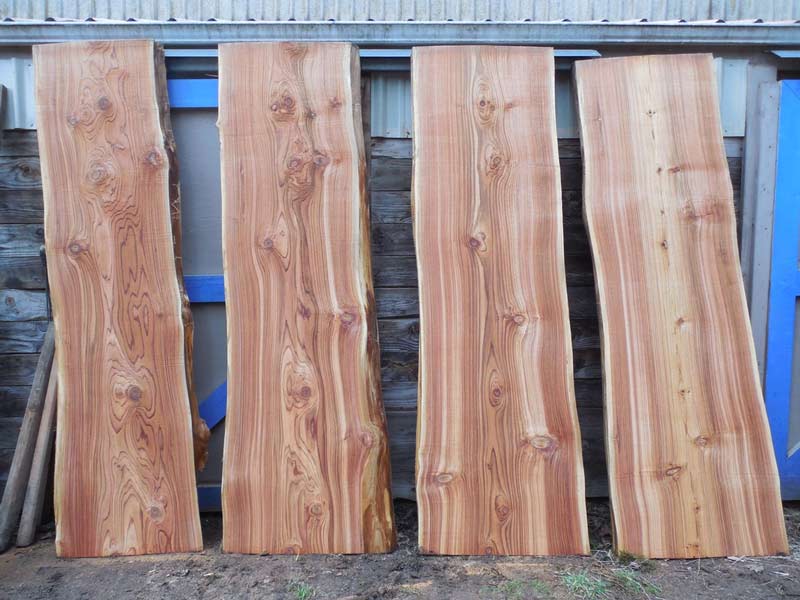
3. Get the City to Remove Trees for Free
If a tree is located on city property but extends onto your property, you can request the city to remove it. This is because street trees are owned and maintained by local governments. Your local government will hire professionals to remove the trees.
However, they will not remove a tree that is fully on your private property, as it falls outside their jurisdiction.
4. Lumber Mills Buy Quality Timber
Lumber mills are where logging companies take their timber to be milled. This is where the money is made on timber as it turns into usable lengths. One way to get trees removed for free is to skip the middleman (the logging company) and deal directly with a timber mill. Let them know the types of trees and quantity so you can secure the deal faster.
Once you have that price, you can approach logging companies to do the job for less than the lumber mill is paying you. This is essentially free tree removal in exchange for wood, but it requires a little bit more work.
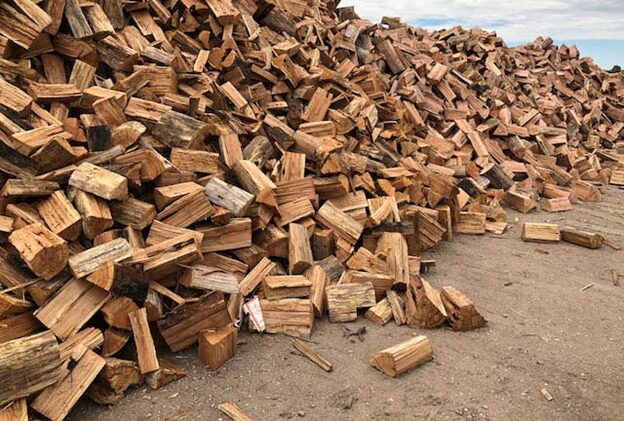
5. Post an Ad on Facebook Marketplace
This will not get you free tree removal but rather offset the costs. When you get a tree service to quote the removal of your tree, ask for a price to cut down and cut up the tree, but leave the logs on site. This will normally save you 20 – 40% off the price of the job.
Then take a photo of the timber and post it on eBay, Marketplace or Craigs List. People will bid to buy it from you, but the kicker is, they will also turn up and haul it away. This should bring the overall cost of tree removal down to an even 50% off.
6. Nurseries and Landscaping Companies
Established trees like Olive trees and many types of palm trees are sought by nurseries and landscaping companies. If you have the right tree in the right location, they will come and haul it away free of charge. This is rare, as you need to have the right tree at the right time in a good location for access by heavy machinery. I recommend phoning nurseries in your city and asking if they purchase established trees.
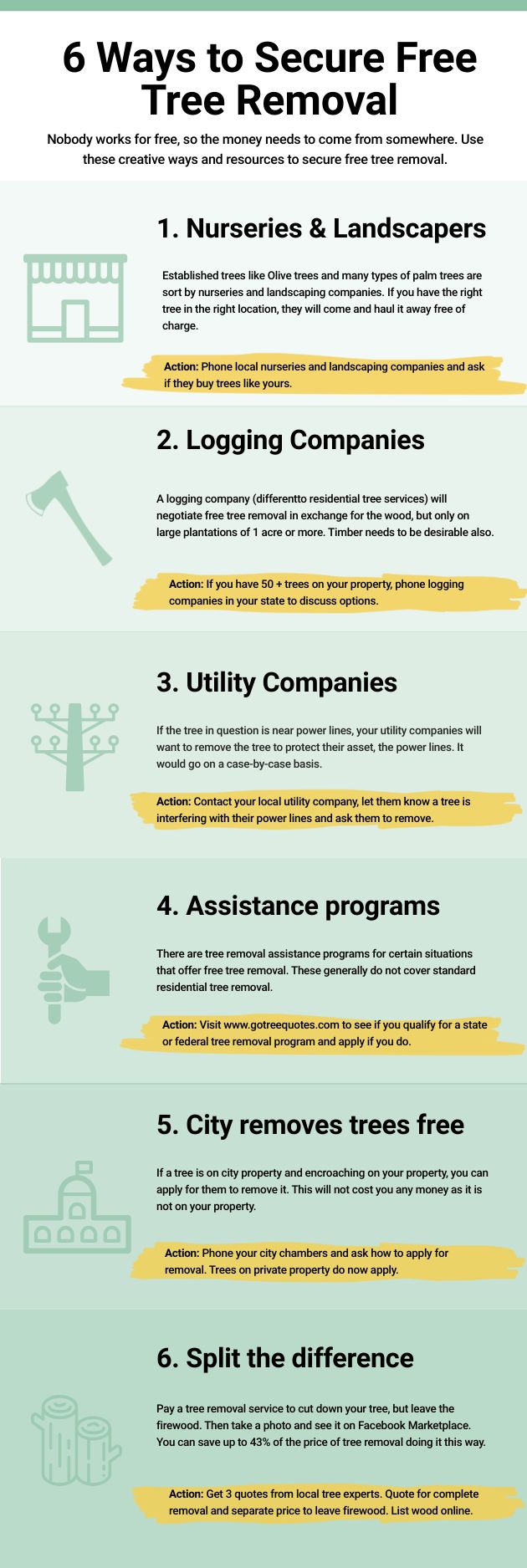
7. Check Your Neighborhood
Lots of Americans struggle to heat their homes during winter so there are plenty of people in your neighborhood who would happily come and cut down your tree in exchange for the firewood.
8. Trees for Landscaping
The following trees are very popular with landscaping companies are they are reasonably easy to transplant and can fetch a high price for the right specimen. Talk to some local landscape companies and see if they are working on a project that requires one of the following. Send a picture and see if they are interested.
- Red Maple
- Jacaranda
- Sea Grape
- Frangipani
- Silk Trees
- Palm Trees
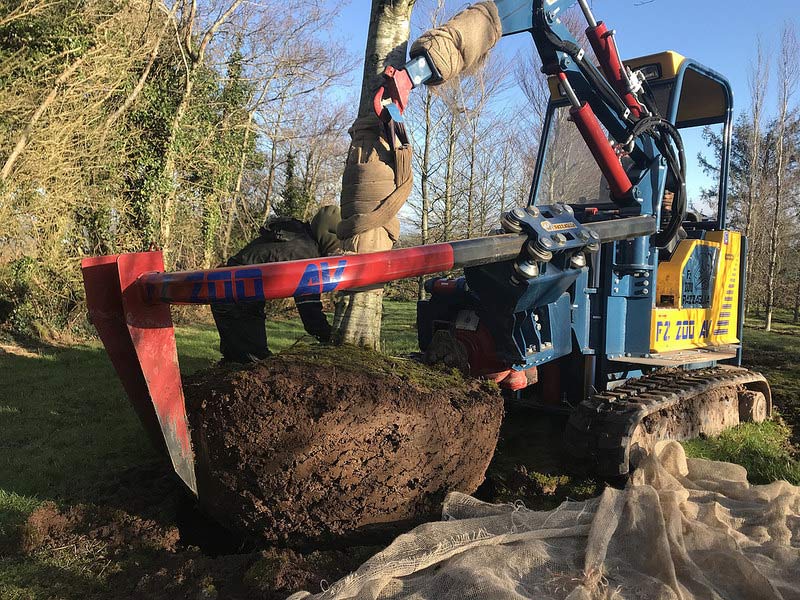
Are All Trees Worth Money?
No. Most large trees are not worth anything except for maybe $200 in firewood timber. But even firewood takes 2 years of drying, cutting, splitting, loading and delivering.
For your tree to be valuable enough to be hauled away for free, it would need to be easily dug out and resold as a mature tree, or the timber should be worth a lot of money.
Which Trees Are Worth the Most Money?
The most expensive trees to buy are mature palm trees. The size, age and species will determine the price. A list of the most sought after palm trees are listed below:
| Common name | Botanical name |
|---|---|
| Canary Island date palm | Phoenix canariensis |
| Bottle palm | Hyophorbe lagenicaulis |
| Foxtail palm | Wodyetia bifurcata |
| Cabbage palm | Sabal palmetto |
| Triangle palm | Dypsis decaryi |
| Coco de mer | Lodoicea |
Factors to Consider When Having Trees Removed for Free in Exchange for Wood
- Location – The tree’s location matters; if it’s in a hard-to-reach area, free removal is unlikely.
- Species – Timber companies may remove high-quality timber trees for free, while landscapers might be interested in valuable landscaping trees.
- Size – Larger trees are more valuable due to the amount of timber, making it easier to get them removed for free, whereas multiple smaller trees may be needed to offset costs.
- Resale Value – Trees with sought-after timber increase your chances of free removal, as companies can profit from the wood.
Free Tree Removal and Cash for Palms
One of the most frequent inquiries I receive here at Go Tree Quotes is from customers in search of complimentary tree services. There seems to be an abundance of inaccurate or deceptive information floating around on the internet, which has prompted me to clarify the actual facts.
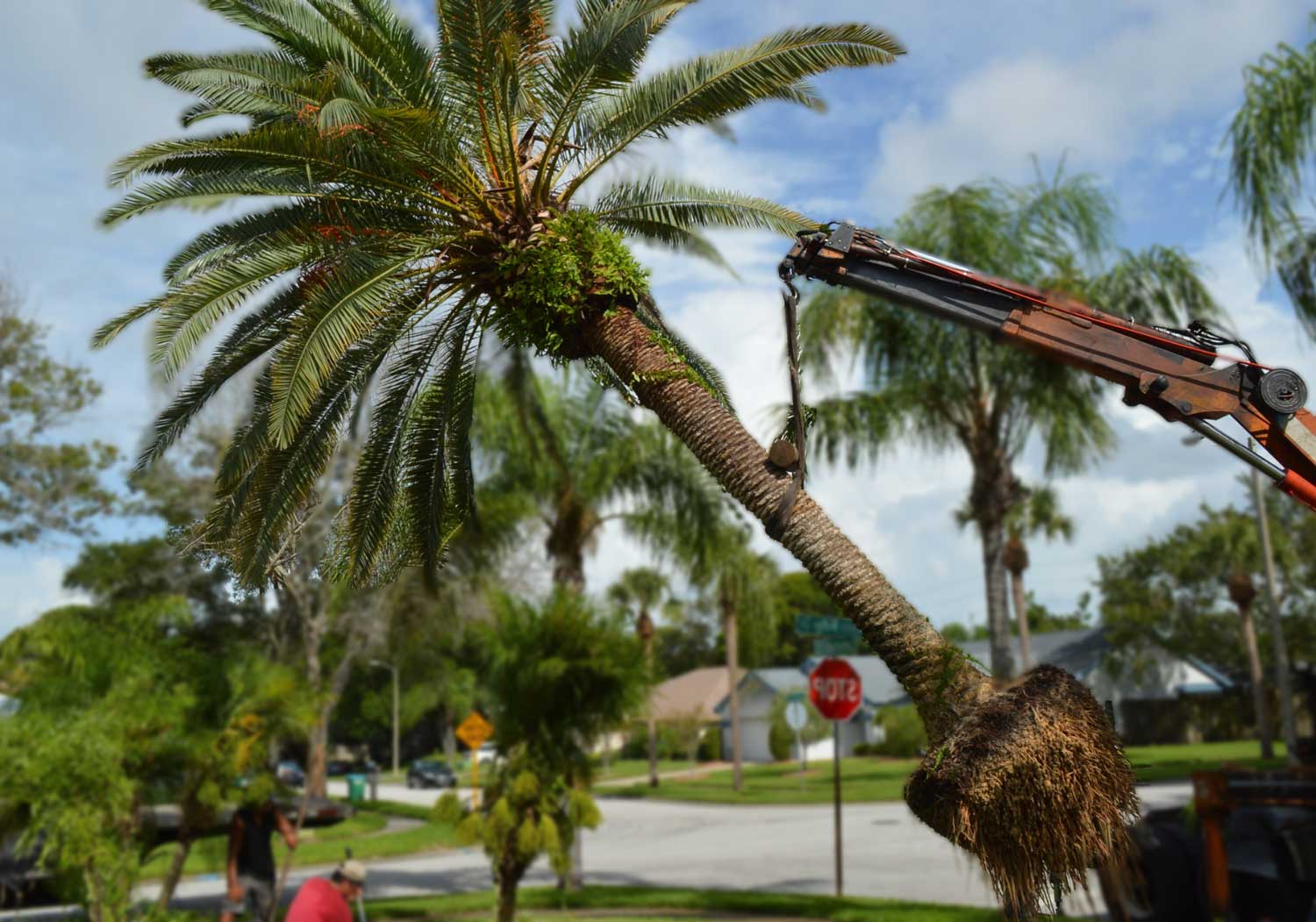
Getting a tree removed free of charge is possible but in rare cases. Most of the time, you must pay for your tree removal.
Palm trees are an exception. If you have sought-after palm species, companies will pay YOU to come and remove it.
Can I Remove a Tree Myself?
DIY removing trees is a viable option and can be next to free if you have the right equipment.
Here are some things to consider when trying to remove a tree by yourself:
- Tree Size – If there is one tree in question and it’s greater than 15ft. (1-story house) then it is best handled by a professional arborist. Working from heights with a chainsaw is extremely dangerous. If you do not have the skills to pull it off, I suggest leaving it to a professional.
- Dumping Fees – Tree services can mulch your tree after they remove it and give away the woodchips free of charge. Unchipped tree branches are useless and will cost you to dump at the local tip.
- Chainsaw Hire – Hire companies usually hire for a half-day (4 hours) or full-day (24 hours). Make sure you also hire all the Personal Protective Equipment at the point of hire.
In a lot of cases, it will work out a lot easier and cheaper to get a local tree-cutting service for the job for you.
Get Paid for Palm Trees
Palm trees are a different kettle of fish. If you happen to have the right type of palm tree and good access, there is a good chance that not only will you get palm trees removed free, but you might actually get money for your tree.
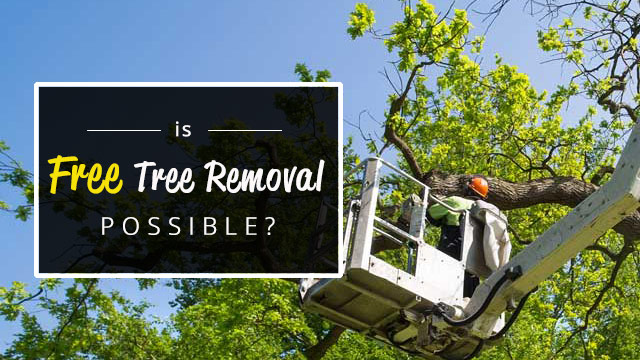
Most palm trees you will need to pay to have removed, but below is a list of desirable species that nurseries, landscaping companies, and building companies will pay you to remove.
Date Palm
This palm is great because it is very common, but still fetches a good price from companies looking to remove them and sell them on. Landscaping companies pay a premium for these types of trees, so if you have one you might be in luck.
Mexican Blue Fan Palm
It’s easy to see why these palms are highly sorted after. This unusual palm is not as common, but also very sought after.
Mediterranean Fan Palm
These palms generally grow in clumps and don’t grow very tall, so they are highly desirable for pool areas and Spanish villa style homes.
Guadalupe Palm
These palms are also considered a fan palm due to the fan-shaped fronds. Like canary island date palms, these palms grow quite tall and if you have them as a pair or more of similar height they can fetch even high prices as they are used quite often at the entrance of homes or buildings.
Pindo or Jelly Palm
The Jelly palm is quite striking and unusual as it kind of looks like a giant pineapple. Its fronds are a similar silver-blue color to the Mexican Fan Palm but with the shape of a more traditional palm tree frond.
Senegal Date Palm
Often found in clumps of palms like in the below photo, these palms are not too easy to come by, so they do fetch a pretty penny. If you are lucky enough to own a clump of these palms and are looking to sell, you will not have any trouble finding a buyer.
Companies Who Pay for Palm Tree Removal
Knowing the palms that are sought after is one thing, but you will also need the companies that remove palm trees for free or even pay for them.
Here’s a list of companies by state that offer payment for the removal of palm trees.
You can also just enter a search in Google along the lines of “Companies that buy palm trees [your state]”.
| State | Company | Contact Number | Website |
|---|---|---|---|
| CALIFORNIA | South West Wholesale Jungle Music Nursery | 888 326-7256 619 291-4605 | Website Website |
| FLORIDA | Bellair Palms | 800 223-0319 | Website |
| NEVADA | Moon Valley Nurseries | 702 246-2065 | Website |
| ARIZONA | Moon Valley Nurseries | 408 374-3964 | Website |
| TEXAS | Moon Valley Nurseries | 888 695-4720 | Website |
Possible Companies to Remove Your Tree Free
| Source | Tree types | FREE tree removal | What are my chances |
|---|---|---|---|
| Firewood Company | All except palm trees | No | < 1% |
| Lumber Company | Exotic timber or a large volume of trees | Maybe | 5% |
| Senior/ Pensioner | Discounts but not free | No | 0% |
| City Pays | Only trees on public land | Yes | 90% |
| Landscaper Nusery | Select palms/ small trees | Yes | 20% |
| Insurance Coverage | Fallen trees only | Yes | 95% |
| Utility Company | Tree close to/ touching power lines | Yes | 50% |
Free Tree Removal for Veterans
A beautiful, well-maintained landscape is a source of pride for many homeowners. However, trees can sometimes become a threat to the safety of your property and your family. This is where free tree removal programs for veterans come in handy.
These programs are available through government-backed initiatives, non-profit organizations, and local tree service companies, all aiming to honor the sacrifices of our nation’s military and their families.
As a veteran, you might qualify for complimentary tree removal services if you’re unable to afford professional services or if you’re currently on active duty and unable to manage the work on your own.
Government-Backed Initiatives
One fantastic avenue for free tree removal services for veterans is government-backed initiatives. These programs provide grants and assistance to veterans and seniors, including hazardous tree removal services in various states, all in compliance with state and local laws.
In some cases, grants are also available to remove a neighbor’s tree, if it poses a threat to your property. The availability of these grants depends on the veteran’s location and whether the neighbor’s tree is on their property line or not.
Research your local government’s offerings and ensure you’re taking advantage of all the available resources.
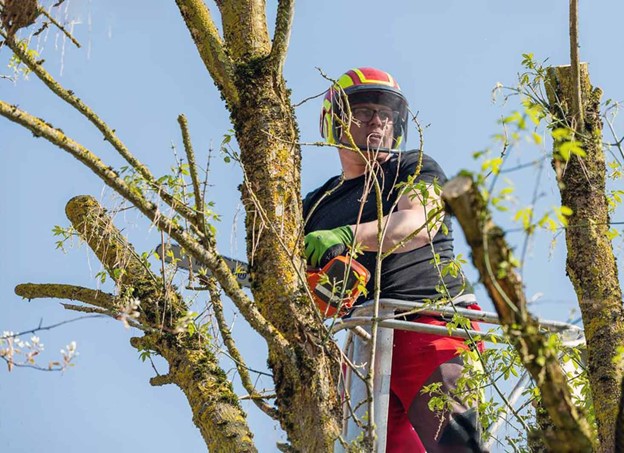
Non-profit Organizations
Another exceptional resource for free tree services is non-profit organizations dedicated to helping veterans and military families.
Operation S.O.S. is one such organization that provides free tree services to soldiers and their families, including tree trimming.
To be eligible for assistance from Operation S.O.S., a veteran can be nominated by simply sharing their story with the organization. This makes it easy for military members and their families to access the help they need.
Local Tree Service Companies
In addition to government-backed initiatives and non-profit organizations, there are local tree service companies that provide special offers to military members and their families, such as discounts or free removal services.
An example is Veterans Tree Service, a team of passionate veterans providing top-notch tree care services, including tree trimming and other tree services at a very reasonable price.
Additional Free Tree Removal Options
Aside from the programs mentioned above, there are other free tree removal options available to veterans. These include utility company assistance, town or city programs, and insurance coverage, all of which can help save on tree removal costs.
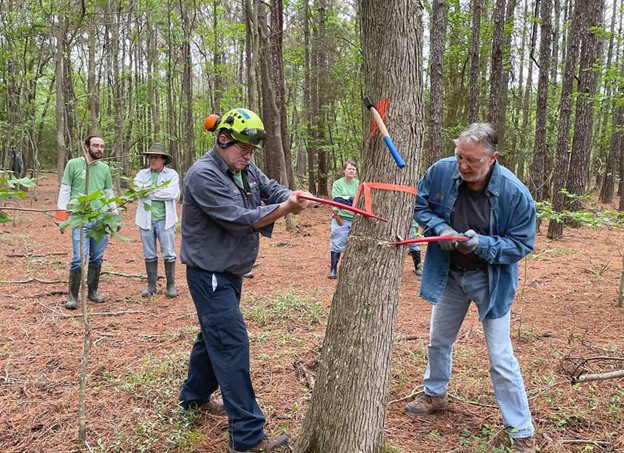
DIY Tree Removal Tips for Veterans
While hiring a professional tree removal service is often the safest choice, some veterans may want to handle tree removal themselves. If you’re considering this, it’s important to know the right equipment and techniques to stay safe and work efficiently.
Necessary Equipment
To safely remove a tree on your own, you’ll need the right tools and protective gear. This includes:
- Chainsaws
- Helmets
- Chainsaw trousers
- Chainsaw boots
- Gloves
- Safety harnesses, belts, ropes, lanyards, slings, and carabiners
Make sure to check local laws and regulations about tree removal. In some areas, you may need a permit or a recommendation from a certified arborist or licensed landscape architect before you begin.
Techniques and Best Practices
Before you start, assess the tree’s size and location. Consider its height, width, and any nearby obstacles, like power lines or other trees, that could affect the removal. With this information, you can plan your approach and determine the equipment you’ll need.
Safety is key. Always wear your personal protective equipment (PPE), which should include:
- Hard hats
- Face shields
- Safety glasses
- Gloves
- High-visibility clothing
- Hearing protection
By following these tips and prioritizing safety, you can successfully complete your DIY tree removal project.
Veteran Community Resources
Veteran community resources can be invaluable in helping you find a local tree removal company that caters to the needs of veterans. Local veteran organizations or support groups can provide recommendations and referrals for tree removal companies that offer discounts or free services for military members and their families.
Organizations like Operation S.O.S. and the Harold K. L. Foundation are excellent examples of veteran community resources that can help you find the right tree removal company.
Additionally, some local municipalities and counties may offer free or low-cost tree removal programs for seniors, which could be a great resource for veterans too. With the help of these resources, you can ensure you’re selecting the best tree removal company to meet your needs.
Free Tree Removal Assistance Programs
Tree removal support programs are crucial for individuals requiring tree removal services but lack the financial means. The majority of these cater to orchard-owning farmers affected by natural calamities.
For farms and nurseries, there are state and federal programs available to assist in the removal of trees essentially after natural disasters.
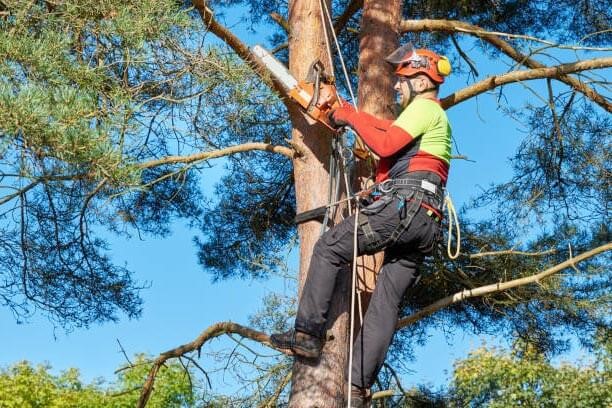
Us Department of Agriculture
You can access tree removal assistance from the USDA based on the Farm Bill Act 20143. Large orchards and nurseries can apply for tree removal assistance from the USDA.
Removing many trees from a farm will cost much. With tree removal assistance, the government helps to keep the farmers in business.
List of Government Programs
There are tree removal assistance programs for certain situations that offer free tree removal. These generally do not cover standard residential tree removal.
Tree Assistance Program (TAP)
Also known as the disaster assistance program, this was set up for farmers, orchards, nurseries and vineyards affected by natural disasters.
If a large number of trees were destroyed, they could help remove and replace new stock. Eligibility includes having suffered a loss in excess of 15% of stock.
FEMA Debris Removal Assistance
Property owners are generally responsible for cleaning up debris on their land, and this work usually isn’t eligible for FEMA reimbursement.
However, FEMA may fund debris removal if the disaster is severe and poses risks to public health, safety, or the community’s economy. They work with state and local governments to identify specific areas eligible for funding, which is intended to benefit the public, not just individuals or small groups.
Benefits of Tree Removal Assistance Programs
- Increased Access to Services – More people can afford professional tree removal services, making it accessible to those who might otherwise avoid it due to cost.
- Healthier Trees – Quickly removing diseased trees prevents the spread of infection to healthy ones, protecting productivity for orchardists and nursery owners.
- Reduced Accidents – Hiring professional tree removal experts minimizes accidents, as they have the skills and tools necessary. Professionals also carry insurance to cover any incidents.
- Faster Replacement – Large-scale farmers can replace removed trees more quickly with the support of assistance programs.
- Easy Removal of Unwanted Trees –Tree owners can efficiently remove unwanted trees from their properties.
- Lower Removal Costs – Assistance programs help reduce the overall cost of tree removal.
- Disaster Loss Management – These programs support orchardists and nursery owners in managing the costs of tree removal and replanting after disasters.
- Access to Proper Tools – Programs provide the necessary tools for effective tree removal through professional tree removal services.
How to Apply for Tree Removal Assistance Program
Step 1 – Find a tree removal assistance program that is likely to assist your need for tree removal.
Step 2 – Ensure that you meet the eligibility criteria for the tree assistance program.
Different programs assist different types of tree owners.
Step 3 – Apply for tree removal assistance. Provide evidence that you need financial help for tree removal. You can send photos of the trees that need removal.
Step 4 – You application will be reviewed.
Step 5 – You will receive a notification if your application is successful and instructions on how you will be able to proceed with the tree removal project.




Tree Removal Grants
Getting grants for tree removal is not easy to come by. There are a handful of opportunities you can tap into to help with free tree removal.
There are no federal government grants that cater to tree removal. However, there are a number of available grants depending on your state or municipality.

Most of these grants are available for hazardous tree removal programs or low-income households. You can explore the list below to see if you’re entitled to any of the several grants available across the country.
State and County Grants for Tree Removal
Nebraska Forest Service Financial Assistance Programs
Nebraska Forest Service has invested in hazardous fuels reduction grants. The project is aimed at the reduction of hazardous trees that can serve as fuels for wildfire accidents. This includes life or dead vegetation that can contribute to fire outbreaks.
There are a number of grants and financial assistance for tree removal available under this program as shown in the table below:
| NFS Grant type | Eligible Location | Eligible Applicants | Reimbursement |
|---|---|---|---|
| Hazardous Fuels Reduction Grants | Adjacent to United States Forest Service (USFS) property | State and private landowners | 100% |
| Forest Fuels Reduction Grants | Pine Ridge, Niobrara Valley, and Wildcat Hills | State and private landowners | 75% |
| Red Cedar Forest Management | Statewide (outside of the Pine Ridge, Niobrara Valley, and Wildcat Hills) | State and private landowners | 75% |
| Burned Land Fuels Reduction Grants | Pine Ridge and Niobrara Valley | State and private landowners | 75% |
| Forest Restoration Grants | Statewide | State and private landowners | 75% |
| Firewise Defensible Space Grants | Statewide | Private forest landowners | 75% |
Alaska Community Forestry Program 2025
The Invasive Tree Control Grant is designed to help communities manage and control invasive tree species Prunus padus, commonly known as European bird cherry, chokecherry or mayday trees and Prunus virginiana, commonly known as Canada red and chokecherry trees.
Various entities, such as municipalities, nonprofits, and community organizations, can apply for the grant. Grant funds can be used specifically for the removal of invasive trees, including labor, equipment, and disposal costs. The grants are 100% reimbursable and will be awarded on a competitive basis.
Interested parties must submit an application that includes project details, budget, and goals. The application may require documentation on the invasive species targeted for removal.
Philadelphia Parks and Recreation Hazardous Tree Removal
If you ever notice a street tree in your area that may be hazardous to the neighborhood, the City of Philadelphia will inspect the situation and may remove trees for free and as needed. You can request the service online by filling out the form here or by calling (215) 685-4363 or (215) 685-4362.
They do not prune or remove trees on private property, in vacant lots, or on alleyways. They are also not interested in removing living and healthy trees.
Ohio Community Wildfire Risk Reduction (CWRR) Grant
CWRR grants are available in Ohio to remove hazardous trees that may be prone to wildfire. This grant is available in the form of 50% reimbursement and it is focused on improving community safety, education, and preparedness.
This grant is available to cooperating Fire Departments within the ODNR Forestry wildfire protection area. The maximum reimbursement per proposal is $3,000. You can learn more about the grant here.
California Wildfire Prevention Grants
The Wildfire Prevention Grants program in California aims to supports projects that enhance community wildfire safety and resilience, particularly in high-risk areas.
Although the grant doesn’t list tree removal assistance as a separate category, it can be included in projects that focus on reducing fuel loads and enhancing defensible space.
If tree removal is part of a larger wildfire prevention plan, it could qualify for funding under this grant.
Grants are awarded based on project scope, community needs, and potential impact on wildfire prevention.
Tree Removal in My Area
If you’re not able to secure a grant to remove your tree for free, you may need to find a more efficient and cost-effective way to keep your property safe.
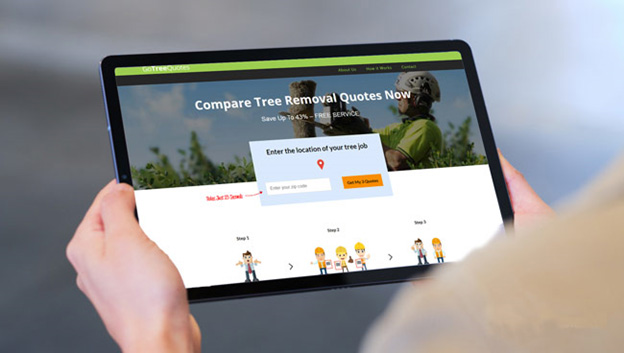
If you’re looking to remove your tree at the lowest cost, the easiest way is to get 3 estimates from the most affordable tree services near you by using this FREE service.
To receive 3 no-obligation quotes, follow these easy steps:
- Fill out the quick 2-minute form (blue box at the top of the page)
- Provide a few more details about your tree pruning project
- Three top-rated local arborists will send you a no-obligation quote
No pressure, just expert advice and competitive deals!










